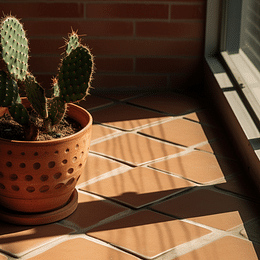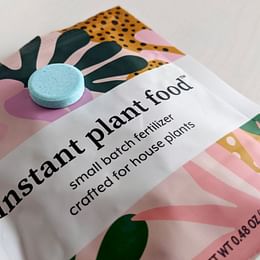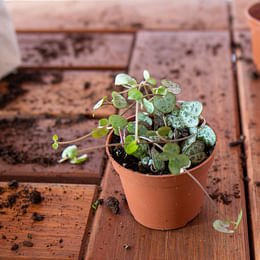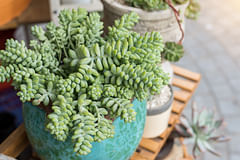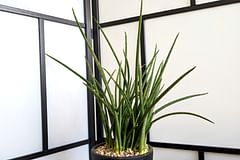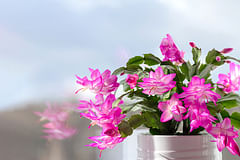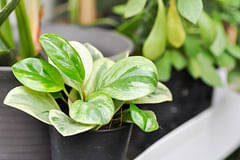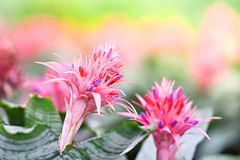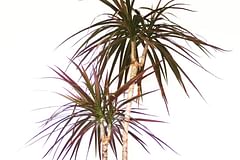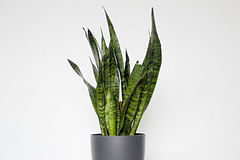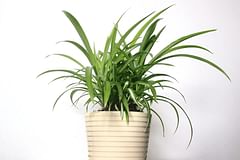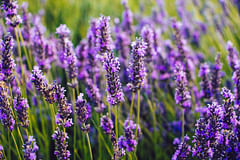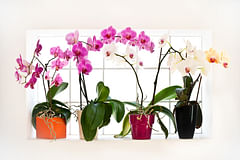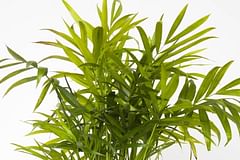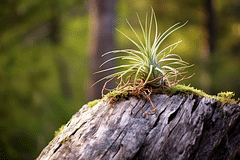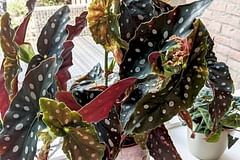How to care for the String of Hearts (Ceropegia woodii)
Learn how to care for the String of Hearts houseplant (Ceropegia woodii). Discover plant care tips and advice, as well as information on ideal temperature range, sunlight requirements, soil type, and more. Perfect houseplant for beginners!
Last updated on:
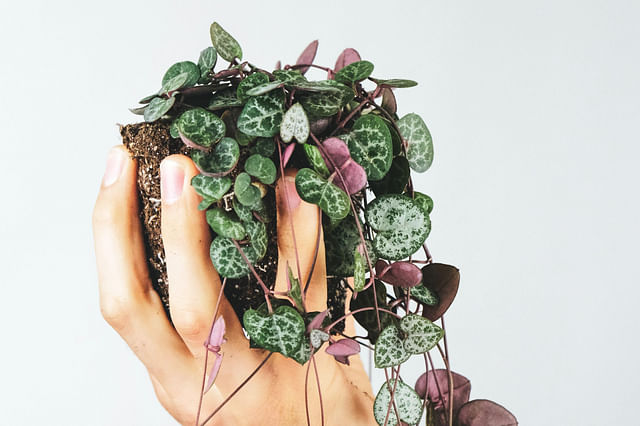
If you're looking for a unique and beautiful houseplant to add life to your home, the String of Hearts (Ceropegia woodii) is an excellent choice! With its gorgeous trailing stems of heart-shaped leaves, this succulent is nothing but a great addition to your house!
This beautiful succulent is perfect for you if you don't have a lot of time to take care of your plants or you always forget to water your plant in time. The string of hearts is a succulent, so it likes to be forgotten about and live its life.
In this plant care guide, these are the topics we're going to look at:
Let's get started and learn how to take care of this beautiful houseplant!
How often should you water the String of Hearts (Ceropegia woodii)?
The String of Hearts (Ceropegia woodii) is an easy-to-care houseplant that does best when the soil dries out completely before you water it again. The String of Hearts is a succulent, so it stores a lot of moisture in its leaves and vines.
On average, you should water your String of hearts once every 7 to 10 days in the spring and summer and once every 10-14 days in the fall and winter. However, you may need to water more or less often, so it's always important to check whether the soil is dry before you water your plant.
If you're unsure if it needs water, try to stick your finger into the soil before giving it a drink - if the top 2-5 cm (1-2 inches) is still moist, you don't have to water your plant yet. Another great way to test if the soil is completely dry is by lifting the pot and feeling its weight. Is it light? It might be time to water your plant.
How much water you should water your String of Hearts depends on the type of pot you're using to grow your plant. If you're using a pot with a drainage hole, you can water your plant until the excess water starts to drain from the bottom of the pot. This is the easiest way to water your plant properly.
What are the signs of overwatering for the String of Hearts (Ceropegia woodii)?
The most common sign of overwatering for the String of Hearts (Ceropegia woodii) is when the leaves start to fall off and become limp. This is because when the plant is overwatered, the roots can’t absorb enough oxygen, causing them to become waterlogged and eventually die. With too much water, the plant can also become susceptible to root rot and other diseases.
Other signs of overwatering include yellowing leaves and stunted growth. If you notice any of these signs, stop watering your String of Hearts and let the soil dry out completely before you water again.
What are the signs of underwatering for the String of Hearts (Ceropegia woodii)?
The most common sign of underwatering for the String of Hearts (Ceropegia woodii) is when the leaves start to curl and wilt. The leaves store lots of moisture, so when the plant is too dry, the leaves will start to curl up. They will turn back to their normal shape when you water your plant again.
What are the sunlight requirements for the String of Hearts (Ceropegia woodii)?
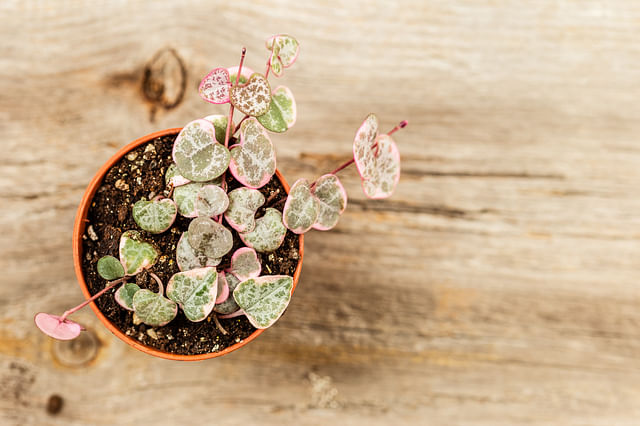
The String of Hearts (Ceropegia woodii) is a succulent, but unlike most other succulents, the String of hearts doesn't like to sit in direct sunlight. The String of Hearts prefers bright, indirect light but can also tolerate lower light levels if you don't have a bright spot left.
Placing your plant near a west-facing window is ideal, as this sunlight is usually quite bright during the day. Make sure to place your String of Hearts in a spot where it doesn't get any direct sunlight, like behind a thin curtain.
If you're growing your String of Hearts indoors, it's important to rotate the pot regularly so that all sides of the plant are exposed to an equal amount of light. This is because uneven lighting can cause some parts of the plant to become leggy.
If you're growing your String of Hearts outdoors, it's best to keep it in a lightly shaded area that gets direct morning or evening sun, but no direct sunlight during the afternoon as this can scorch the plant's leaves.
What are the signs of too much sunlight for the String of Hearts (Ceropegia woodii)?
The most common signs of too much sunlight for the String of Hearts (Ceropegia woodii) are discoloration, browning, and scorching of the leaves. This happens because the plant's leaves become dehydrated when they get too much direct sunlight and can even cause them to become brittle and fall off.
What are the signs of too little sunlight for the String of Hearts (Ceropegia woodii)?
The most common signs of too little sunlight for the String of Hearts (Ceropegia woodii) are pale leaves and slow growth, and leggy growth. This is because the plant needs light to photosynthesize and create food for itself. Without enough light, the plant can't produce enough energy to grow and thrive.
What is the best soil for my String of Hearts (Ceropegia woodii)?

The best soil for the String of Hearts (Ceropegia woodii) is a well-draining, aerated potting mix that contains equal parts of potting soil, sand or perlite. The String of Hearts is a succulent, so it doesn't like to sit in moist soil for too long.
The ideal soil should dry out in a few days and any excess soil needs to drain to the bottom of the pot quickly. The potting soil will help to provide the String of Hearts with nutrients, while the sand or perlite will improve the drainage of the soil.
With the well-draining soil, it's also important to use a pot with drainage holes so that excess water can easily escape and the plant isn't sitting in a puddle of water at the bottom of the pot.
How often should I repot my String of Hearts (Ceropegia woodii)?
You should repot your String of Hearts (Ceropegia woodii) houseplant every 2-3 years in the spring or summer. During this time, you should check if the plant has outgrown its current pot. Before you're repotting your String of Hearts, it's easiest to let the soil dry out completely to prevent a huge mess.
When repotting, be sure to use a pot with drainage holes and a fresh potting mix that contains equal parts of potting soil and sand/perlite. This will give your plant the perfect growing environment for a few years.
Once it's been repotted, water your houseplant deeply to let the soil settle and provide your plant with some moisture to help recover from the repotting. After this, you can let the soil dry out again and take care of it like you normally would.
How do I know my String of Hearts (Ceropegia woodii) needs to be transplanted in a larger pot?
Your String of Hearts (Ceropegia woodii) houseplant may need to be transplanted in a larger pot if it shows signs of becoming rootbound and you notice that it is no longer growing as quickly or thriving as it once did.
Signs of being rootbound include soil crusting, roots pushing up against the walls of the pot, and visible roots emerging from the drainage holes. If you notice any of these signs, it's time to repot your houseplant in a larger container with fresh soil mix.
What is the ideal temperature range for the String of Hearts (Ceropegia woodii)?
The ideal temperature range for the String of Hearts (Ceropegia woodii) houseplant is between 15-26°C (59-79°F). This temperature range helps to ensure that the plant has enough warmth to grow and thrive, yet it isn't too hot or cold. The easiest way to check if a spot is a good fit for your String of hearts, measure the temperature with a thermometer throughout the day.
If the temperature drops below 15°C (59°F), it can cause the String of hearts to become stressed and even die. If you notice that your houseplant is not growing as quickly or thriving as well, check its temperature with a thermometer and adjust accordingly.
How much humidity does the String of Hearts (Ceropegia woodii) need?
Most succulents like a dry environment and the String of Hearts can also grow in a dry environment quite well. However, to make it a little more comfortable, you should give it a little bit of extra humidity.
The String of Hearts houseplant prefers a medium level of humidity between 40-50%. You can achieve this level of humidity by using a humidifier or placing a few plants close together. You should make sure to keep your plant away from air vents and open windows as this could make the air too dry for comfort.
How often should you fertilize the String of Hearts (Ceropegia woodii)?
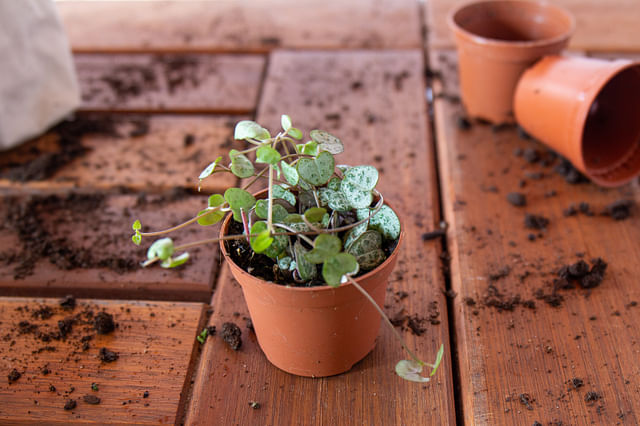
Like most succulents, the String of Hearts doesn't need to be fertilized very often. On average, you should fertilize the String of Hearts (Ceropegia woodii) every 2-3 months during the growing season (spring and summer). The String of Hearts prefers a balanced, water-soluble fertilizer that's designed for houseplants.
When fertilizing, be sure to dilute the fertilizer according to the instructions on the label and avoid over-fertilizing. Too much fertilizer can cause damage to your houseplant as it can burn its roots and leaves. Once you've finished fertilizing, make sure to water your houseplant thoroughly so that the fertilizer gets absorbed more easily.
How often should I prune my String of Hearts (Ceropegia woodii)?
You should prune your String of Hearts houseplant every few months to keep it healthy and well-maintained. Pruning will help to remove any dead or damaged leaves, as well as any stems that are becoming too leggy. This helps the houseplant to stay healthy and promote new growth.
It is important to use sharp, clean pruners when pruning houseplants to avoid any damage. When you are finished, make sure to dispose of the clippings properly so that they don't spread any potential diseases or pests.
Pruning your String of Hearts helps to promote growth because the plant starts to focus on growing new leaves and vines rather than growing longer vines.
Make sure to only prune your String of Hearts during the spring and summer, when the plant has a chance to recover and grow new vines and leaves.
What are common pests for the String of Hearts (Ceropegia woodii)?
The String of Hearts (Ceropegia woodii) houseplant is susceptible to a variety of houseplant pests, including mealybugs, aphids, scale insects, spider mites, and whiteflies. Your plant becomes especially susceptible to any of these pests when it's stressed out because of improper watering, sunlight, or fertilizing.
To prevent infestations of these houseplant pests, make sure to keep your houseplant in a location where you can give it proper care and attention. Additionally, be sure to inspect your houseplant regularly for any signs of pests.
If you do notice any houseplant pests on your houseplant, you can treat your plant and get rid of the pests in several ways. You can use insecticidal soap or an insecticidal spray to apply to your String of Hearts and get rid of them. You can remove the pests from your plant with a cotton swab dipped in rubbing alcohol.
Is the String of Hearts (Ceropegia woodii) toxic for cats and dogs?
If you've got curious pets or children, you'll be happy to know that the String of Hearts is non-toxic for your cats, dogs, and small children. If your children or pets happen to chew on the plant, they'll be safe and won't be harmed.
Thank you for reading this post! I hope it helps you to keep your plants healthy and beautiful! If you're looking for more guides on specific plants, you can always request a plant guide to get a guide for the plant you have trouble with.
Tags: beginner-friendly, Plant care tips, drought-loving, pet-friendly
Posted on: Feb 25, 2023